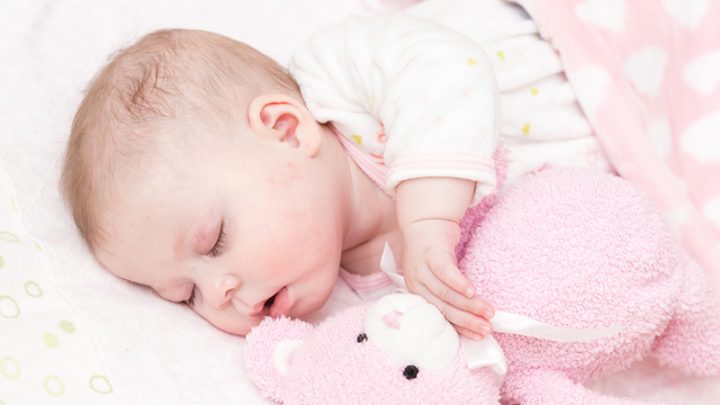Has putting your baby to sleep become mission impossible?
Have you become so accustomed to hearing your baby crying in sleep that it has become your nighttime “melody”?
If so, then the wake and sleep method might be just the thing you need!
One of the biggest myths about sleeping is the assumption that human beings are capable of sleeping the whole night without ever waking up.
Because of that, many parents focus on finding sleep methods that will help their baby sleep uninterrupted through the night.
Well, such a thing doesn’t exist.
Here’s the truth: We all wake up in the middle of the night and not just once, but multiple times.
Both babies and adults wake up during the night, the difference is that it isn’t really a major problem for adults and we don’t start crying about it.
Babies tend to have difficulties with their sleeping habits or cry when they wake up because they still haven’t adjusted to sleeping on their own.
So, when a baby wakes up crying, it’s because she thinks that she needs a parent’s presence and other pacifiers to be able to fall asleep again.
Of course, there are a ton of other reasons for babies struggling to fall asleep or crying during sleep but for today we’ll focus on the above reason.
The only way to help your baby (and yourself) develop healthy sleep habits and avoid toddler sleep regression is by promoting independent sleep.
The wake and sleep method is an approach that promotes independent sleep patterns with the help of the baby’s parents.
What Is The Wake And Sleep Method?
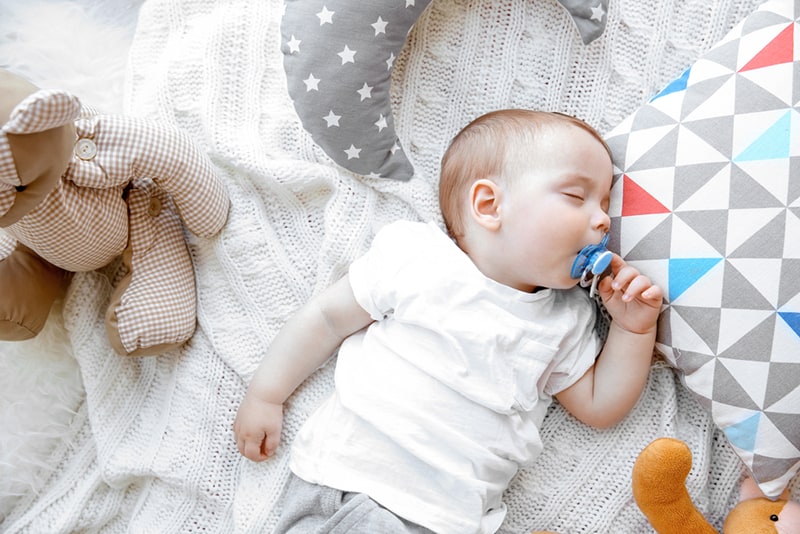
The wake and sleep method is not a magical technique that will put your baby to sleep within seconds with zero effort.
I know this is every parent’s dream but, unfortunately, as I’m sure parenthood has made you realize, it’s never that easy!
The wake and sleep method is about teaching your baby to self-soothe during sleep.
Basically, this sleep training method is about helping your baby learn to fall asleep again on her own once she wakes up.
Sounds brilliant, right?
Let’s say that your baby wakes up in the middle of the night and starts crying.
There are many possible reasons for this but the main one is probably that she’s demanding a pacifier to be able to fall asleep again.
Which pacifier differs from baby to baby, it could be a bottle, swaddling, breastfeeding, cuddle sessions, and so on.
Many parents think that if they don’t give their baby what she wants, she will turn into a cranky, sleep-deprived, and overtired baby.
The secret to establishing healthy sleep habits is in encouraging your little one to believe that they’re capable of falling asleep again on their own and without pacifiers when she wakes up and that’s exactly what this method is about.
How To Use The Wake And Sleep Method At Night Or For Early Morning Wakings
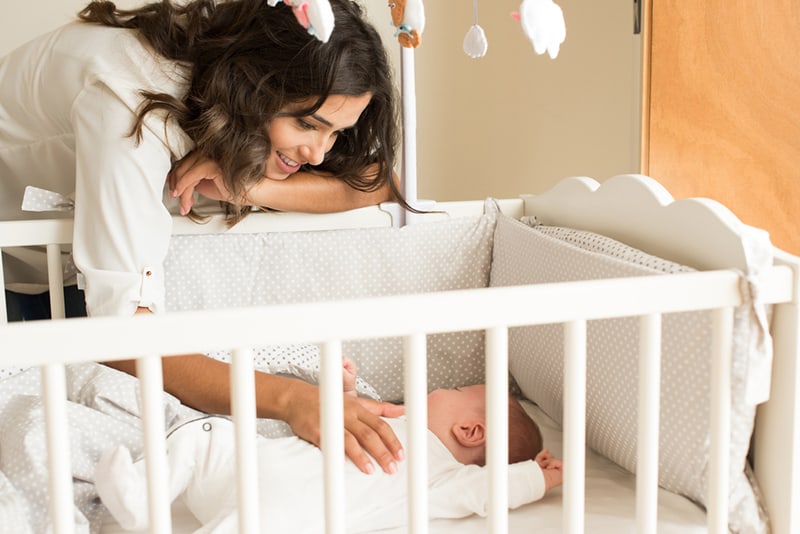
The way this method works may seem a little weird but don’t let it discourage you.
The first step is to set an alarm for one hour before the time of your baby’s habitual night or early morning wake-up.
Let’s say that your little one wakes up at 4:30 every morning, then you’ll need to set the alarm one hour before that which is 3:30.
Enter your baby’s room at that time and touch your baby gently.
If your baby is a light sleeper, simply opening the door of their room will suffice.
Keep in mind that you don’t want your baby to wake up – the idea is to put them into another sleep cycle so that you prevent their “scheduled” waking up and prove to them that there’s no need to cry when they wake up.
When they move slightly, quietly walk out and pay attention to whether or not they wake an hour later.
Soon you might discover that this is the best wake to sleep method for early waking.
Just remember that your main goal is not to teach your baby the art of “sleeping through the night without ever waking up” but rather to teach her to fall asleep on her own when she wakes up during the night.
How To Use The Wake And Sleep Method During Naptime
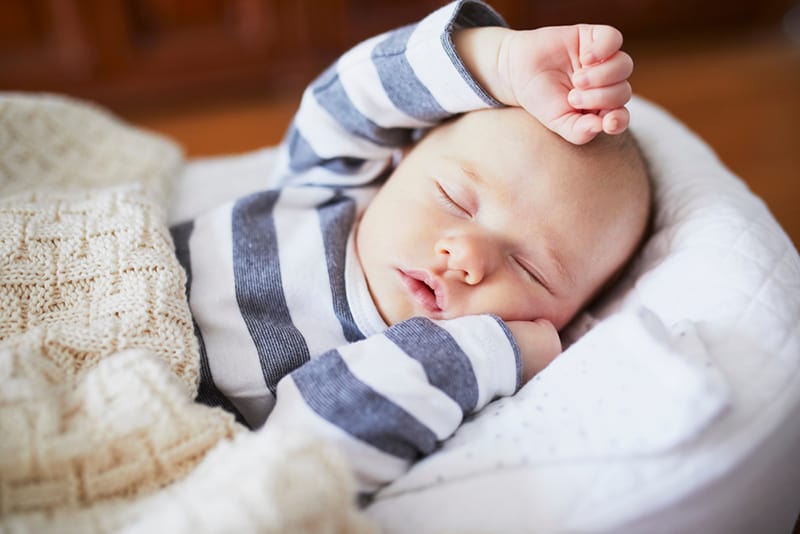
Does your child typically wake early from her naps?
Not to worry, the wake to sleep method for naps will come to the rescue!
Every parent knows that napping is often more challenging than nighttime sleep.
You can use the wake and sleep technique by entering your baby’s room 10 minutes before her habitual wake-up.
Touch your baby gently (rub her cheek or head) until you see her move slightly.
Remember that you don’t want to wake your baby up, you just want to stir her gently in her sleep.
If you’re not sure if your baby moved, just wait for a minute or two and then repeat, gently rubbing her cheek or head.
If your baby wakes up after being slightly touched, next time try doing the wake to sleep technique a little bit earlier.
Feel free to experiment with timing because every child is unique.
Regardless of whether you’re trying this method during the night or naptime, it will take time before you see any results.
Allow this method 3-5 days before expecting any form of outcome.
I totally understand the pain of setting an alarm during the night, but once you see the results of this method, you will be grateful that you persevered.
When Is The Ideal Time To Start Sleep Training
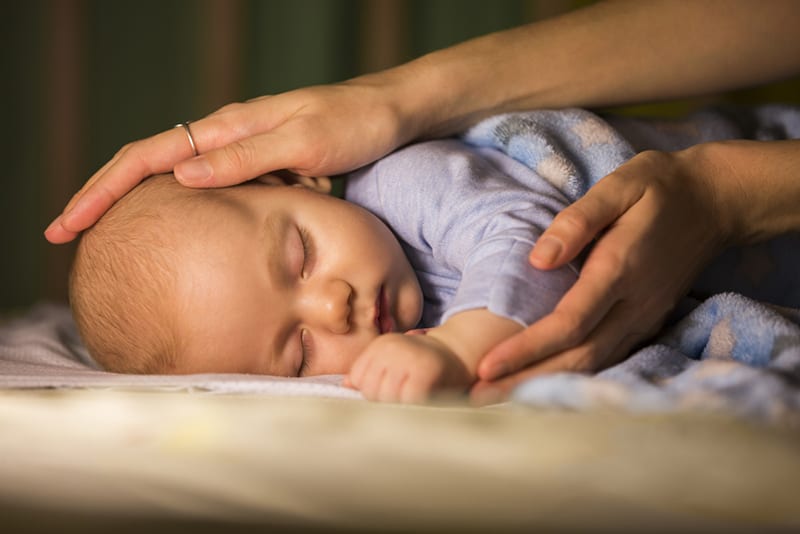
The ideal time to start sleep training is different for every baby and some methods, such as shush pat, work best with younger babies.
Most sleep coaches claim that the best time to start sleep training is somewhere between four and six months.
This is the ideal time because a four-month old (or six-month old) baby hasn’t developed rock-solid sleeping habits yet.
In other words, your little one hasn’t had much time to get used to being nursed or rocked to sleep.
Also, at this age babies are capable of sleeping for six to eight hours overnight without demanding food.
If your baby is older than six months, no need to worry because it’s never too late to work on good sleep habits.
It might be a little bit more challenging when the baby is older than six months but it’s still doable.
6 Things To Keep In Mind Before Getting Started With Sleep Training Methods
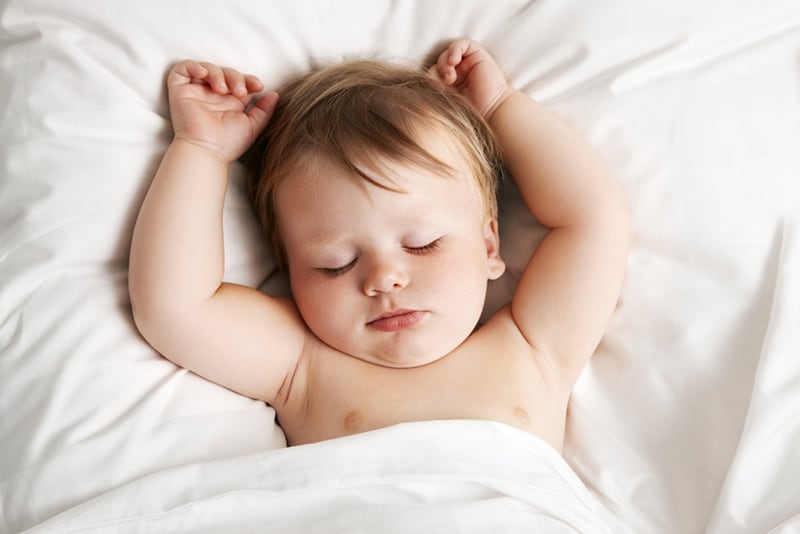
Regardless of which sleep training method you choose, the following tips will help prepare your baby for sleep training and ensure a smooth transition to dream world:
1. Follow a regular sleep schedule
Just like cats, babies like routine, and by following a schedule, you help create good habits.
That’s why it’s important to put your baby to bed at the same time each night. As every parent knows, earlier is better.
You cannot go wrong with 19:00 – 20:00.
2. Establish a consistent bedtime routine
A consistent bedtime routine is essential for every baby.
Follow a consistent routine to create a smooth transition from awake time to dreamland.
This includes swaddle sessions, diapering, bath time, white noise, books, and feeding (not necessarily in that order).
So, if you notice that your baby falls asleep during bottle time, then schedule the bedtime routine a little bit earlier than usual.
All these things are known as sleep associations.
If you repeat this bedtime routine several times, your baby will come to associate it with sleep.
So, it’s important to be careful about sleep associations and pacifiers.
You don’t want your little one to start using breastfeeding as a night waking pacifier.
Also, keep in mind that your baby needs to be awake when you put her to bed so that she remembers the entire process (aka routine) before going to sleep.
3. Know when is the right time to start with sleep training
If your baby has recently been dealing with challenging events and circumstances (like a new nanny, health problems, traveling, etc), then it’s wise to wait a little bit longer before getting started with sleep training.
4. Know when your baby is tired and sleepy
First of all, allow your baby to be awake for an appropriate amount of time before expecting her to go to sleep.
The easiest way to notice if your baby is tired is to pay attention to body language and look for signs like eye rubbing and yawning.
Before putting your baby to bed, make sure that she’s sleepy but also make sure that she’s not overtired.
When a baby is overtired, it’s more challenging for them to fall asleep and chances of waking-up early are higher.
5. Put your baby to sleep when awake
Basically, sleep training methods are all about giving your baby some space to be independent.
If you continuously rock your baby to sleep every night, she’ll expect you to keep doing so because, otherwise, she won’t want to fall asleep.
Your goal is to teach your little one to sleep on her own, so putting your baby to sleep when still awake but sleepy is best.
Soon your baby will learn that helping her fall asleep isn’t your job but rather something she’s capable of doing on her own.
6. (Try to) delay your response time
I know how tempting it is to jump at your baby’s every cry and slightest move in the bassinet or crib, but try to delay your response time.
This is the biggest mistake many parents make.
Let me explain.
The thing is, babies tend to make lots of noise during the night but this doesn’t mean that you need to intervene.
More often than not, babies fall asleep on their own after a crying session so all you need to do is give them some time to do so.
That’s why you need to give your baby some space to try soothe herself.
See this as a type of CIO (Cry It Out) method where you let your baby cry for a little while and then respond if necessary.
If your little munchkin has been crying for some time, then try the pick up put down method.
This method was popularized by Tracy Hogg in her book called “Secrets of the Baby Whisperer: How to Calm, Connect, and Communicate with Your Baby”.
Another method similar to this one is the check and console method, also known as the Ferber method.
It includes checking on your baby at longer intervals.
More Baby Sleep Tips
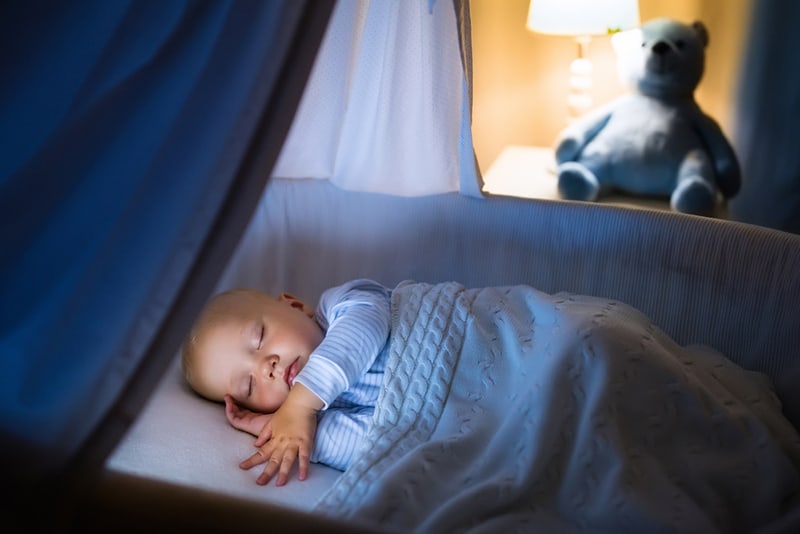
From the room temperature to the clothing your baby is sleeping in, there are many factors that influence a baby’s sleep patterns.
So, here are some of the things you need to pay attention to as well:
• Your baby’s clothes
One thing is certain, if your baby doesn’t feel comfortable, she won’t be able to fall asleep no matter which sleeping method you choose.
Keep in mind to take off hats, and dress your baby in layers instead of thick pajamas before putting your baby to sleep.
All these things and other details mean so much to every baby. Learning how to dress a baby for sleep is crucial for quality sleep.
• The room’s temperature
The easiest way to know if the room temperature is ideal for your baby is to consider your own level of comfort.
If you’re not feeling too cold or too hot while being in your baby’s room, then you know it’s okay for your little one, too.
If the temperature is too high or too low, chances are your baby will wake up in the middle of the night crying or won’t even be able to fall asleep in the first place.
As with everything else, the key is in finding the balance.
The ideal temperature for newborn babies to sleep is between 68 and 72 degrees Fahrenheit.
• The type of mattress
Just like in the adult world, some mattresses are extremely uncomfortable while others feel like you’re sleeping on clouds.
The latter is every parent’s goal for their child.
It may take some time before you find the best baby crib mattresses, but it will be totally worth it.
The best sleeping mattress for a baby is not too soft and not too hard but somewhere in between.
It should also be hypoallergenic and free from flame-retardants.
Pay attention to both materials and your baby’s safety before everything else.
• Use the power of baby projectors and soothers
They say that modern times require modern solutions and we can definitely apply this rule to sleeping routines as well.
If you haven’t tried it yet, I suggest using baby projectors and different soothers when putting your baby to sleep.
Music and night light stars will create a relaxing and soothing environment for your baby and therefore help her fall asleep faster.
Baby projectors and soothers will be another sleep association for your baby.
Whenever you turn on that specific music when putting your baby to sleep, she will instantly connect it to sleeping.
• Consult with professionals
If you’re feeling exhausted and don’t find any of the above tips and sleeping methods helpful, maybe it’s time you consult with a baby sleep consultant, infant sleep expert, or pediatric sleep specialist.
I suggest seeking professional help especially if you’re a first-time parent and you’re struggling to solve the sleeping problems.
They’ll introduce you to lots of effective methods that help babies sleep on their own.
The Takeaway
The wake and sleep method requires a little bit of sacrifice from parents when it comes to the setting of an alarm one hour before the time of your baby’s habitual night or early morning wake-up.
The first night of sleep training will probably be challenging and not as you expect it to be, but don’t get discouraged.
All you need to do is give your baby some time to adjust to new sleeping habits.
I assure you that your baby’s current chaotic sleep schedule will soon vanish into thin air and there will be very little fussing or no fussing at all.
All of you will soon be able to sleep like babies (both literally and figuratively)!
One more tip: If you think that your baby’s sleep problems are related to medical issues, you should definitely consider contacting your doctor or pediatrician.
Now, let’s wrap this all up with one of the funniest sleeping baby quotes for sleep-deprived parents by Jimmy Falon:
“When you have a baby, sleep is not an option. You can’t sleep. Even on vacation, you wake up at 6:30 am.”
Happy sleep training mammas!
References:
• Hogg, T., & Blau, M. (2001). Secrets of the Baby Whisperer: How to Calm, Connect and Communicate with your Baby. London: Vermilion.
Like this post? Please share or pin it for later. You can also stay in the loop and follow us on Facebook, Instagram or Pinterest.
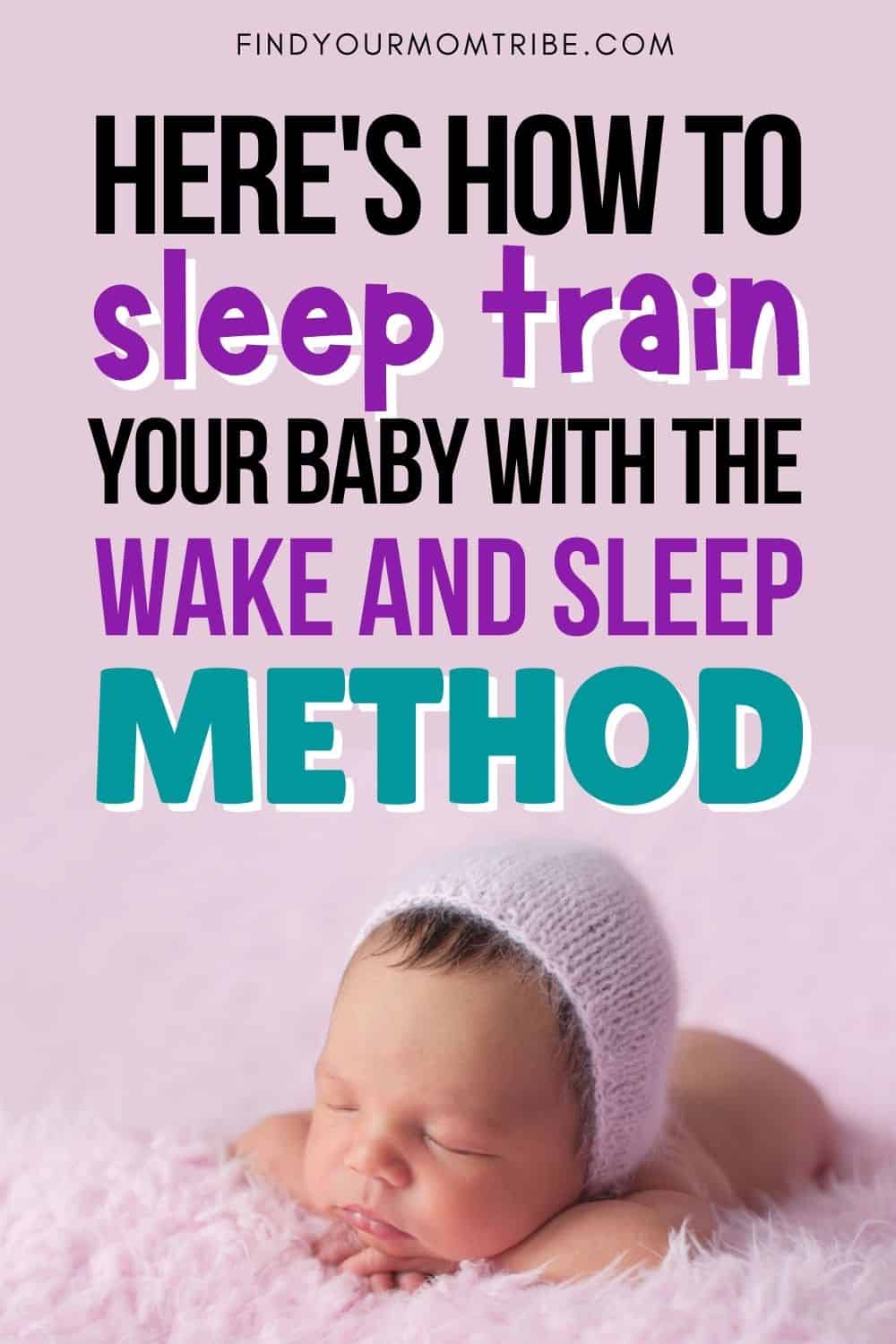
We love honesty! Find Your Mom Tribe is an Amazon Associate and we earn from qualifying purchases through affiliate links at no extra cost to you. Please see our full Amazon Affiliate disclosure for more information.

